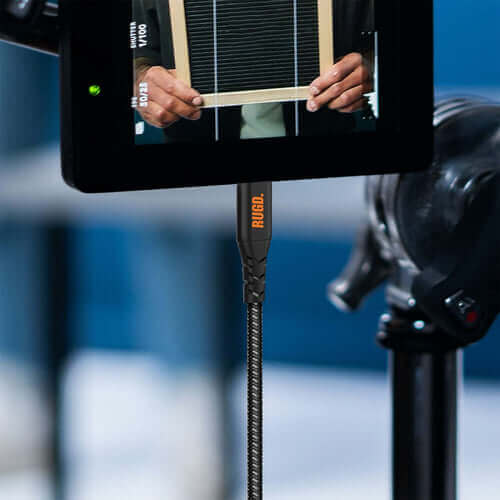
How to Choose the Right USB-C to USB-C Cable for Fast Charging and Data Transfer
Share
Finding the perfect USB-C to USB-C cable can feel like navigating a maze of tech jargon. There are countless choices, each claiming to be faster, stronger, or smarter. But not every cable delivers the performance your devices deserve. Whether you’re charging, transferring data, or connecting a display, the right cable makes all the difference.
This guide covers everything you need to know about USB-C cables — from charging speeds and certifications to spotting genuine products — so you can make an informed choice that keeps your devices safe, efficient, and ready to go.
Understanding USB-C: The Modern Standard
What Makes USB-C Different?
USB-C is the universal standard for modern electronics. Its reversible design means no more struggling to find the right side up, and its flexibility supports charging, data transfer, and even 4K video output — all through one port.
Why Upgrade to USB-C?
USB-C outperforms older connectors like USB-A and USB-B in every way. It offers:
- Faster charging with Power Delivery (PD) support
- Data speeds up to 40Gbps with Thunderbolt 4 cables
- Greater compatibility across phones, tablets, and laptops
- Video output capability for connecting to external displays
If you’re moving from USB-A, you’ll instantly notice the speed and reliability upgrade.
Key Features to Look for in USB-C Cables
Power Delivery (PD) for Faster Charging
USB-C Power Delivery intelligently adjusts voltage and current, offering rapid charging for laptops, tablets, and smartphones. The result? Up to 70% faster charging compared to standard USB connections.
Alternate Modes for Video Output
USB-C can do more than charge — it supports Alternate Modes for video. Whether you’re using HDMI or DisplayPort, make sure both your device and cable are video-compatible.
Check out RUGD’s Outdoor Tech Gear Collection for rugged cables and power solutions built to perform anywhere.
Comparing USB-C Cable Types and Standards
Know Your Cable Type
Not all USB-C cables are the same. Here’s what defines each standard:
- USB 2.0: Basic charging and 480Mbps data transfer
- USB 3.1 / 3.2: Faster speeds up to 10Gbps
- Thunderbolt 3 / 4: Premium 40Gbps data and 4K video capability
Check the Power Rating
Cables vary in wattage:
- 60W cables handle phones and tablets.
- 100W cables are ideal for laptops and high-powered devices.
For dependable charging in any environment, explore the RUGD Rhino Power USB-C to C Cable — engineered for strength, speed, and safety.
Choosing the Best Cable for Your Devices
Match Your Needs
Before buying, decide what matters most: speed, durability, or versatility.
- For charging-only, choose a high PD (Power Delivery) cable.
- For charging + data, pick USB 3.1 or Thunderbolt cables.
Braided vs Non-Braided
Braided cables are more durable and resist tangling — a great option for travel or daily use.
USB-IF Certification
Always look for USB-IF certification on the packaging. Certified cables meet strict safety standards and won’t overheat or damage your devices.
RUGD’s Power Bank and Cable Range includes multiple certified options tested for reliability and rugged performance.
Spotting Genuine USB-C Cables and Avoiding Counterfeits
How to Identify Genuine Cables
- Look for USB-IF certification logos.
- Avoid suspiciously cheap cables or unbranded packaging.
- Read verified reviews and buy from trusted retailers.
Why RUGD Stands Out
RUGD’s Rhino Power USB-C to C Cable combines rugged materials with premium charging performance — perfect for adventurers, travellers, and everyday users who need gear they can trust.
For enhanced efficiency and all-day energy, consider maintaining your own balance too. Just as your devices perform better with the right power source, staying hydrated boosts your physical energy — explore Viva Wellness Drip to see how hydration therapy supports your performance and endurance.
Checking Compatibility and Testing Your Cable
Not every USB-C port supports every feature. Some handle charging only, while others support data or video transfer. Always check your device’s specifications before purchase.
Test your new cable with your power bank or laptop to confirm stable performance. For maximum efficiency, choose cables that support Power Delivery 3.0 or Thunderbolt 4.
Caring for Your USB-C Cable
Best Practices for Longevity
- Avoid bending or twisting near connectors.
- Keep connectors clean and free of dust.
- Use cable organisers for storage to prevent tangling.
When to Replace
Replace your cable if you see fraying, exposed wiring, or unstable charging. Faulty cables can lead to overheating or data loss.
RUGD cables are designed to last, featuring reinforced joints and braided nylon protection to outlast daily wear and tear.
FAQs About USB-C Cables
Do all USB-C to USB-C cables support fast charging?
No. Look for Power Delivery (PD) support and the cable’s wattage rating (60W or 100W). Certified PD cables charge faster and more safely.
What’s the difference between 60W and 100W USB-C cables?
60W suits phones, tablets, and many ultrabooks. 100W handles power-hungry laptops and multi-device charging. Match the cable wattage to your charger and device.
How can I tell if a cable supports video output?
Check the specs for Alt Mode (DisplayPort/HDMI) or Thunderbolt 3/4. Your device must support video over USB-C as well, not just the cable.
Are Thunderbolt cables worth it if I just need charging?
Usually no. Thunderbolt 3/4 is great for 40Gbps data + 4K video, but for charging only, a PD-rated USB-C cable is more cost-effective.
Does cable length affect charging and data speed?
Yes. Shorter cables typically deliver more stable power and higher data rates. Use longer cables only when you need the reach.
Are braided USB-C cables more durable?
Generally yes. Braided exteriors resist kinks and wear. Look for reinforced strain relief at the connectors for maximum lifespan.
Final Thoughts
Choosing the right USB-C cable isn’t just about speed — it’s about safety, reliability, and performance. By understanding the types, certifications, and use cases, you can avoid counterfeits and keep your devices running efficiently.
When performance matters, trust RUGD Rhino Power USB-C to C Cable — built for endurance, tested for strength, and designed for life on the go.

